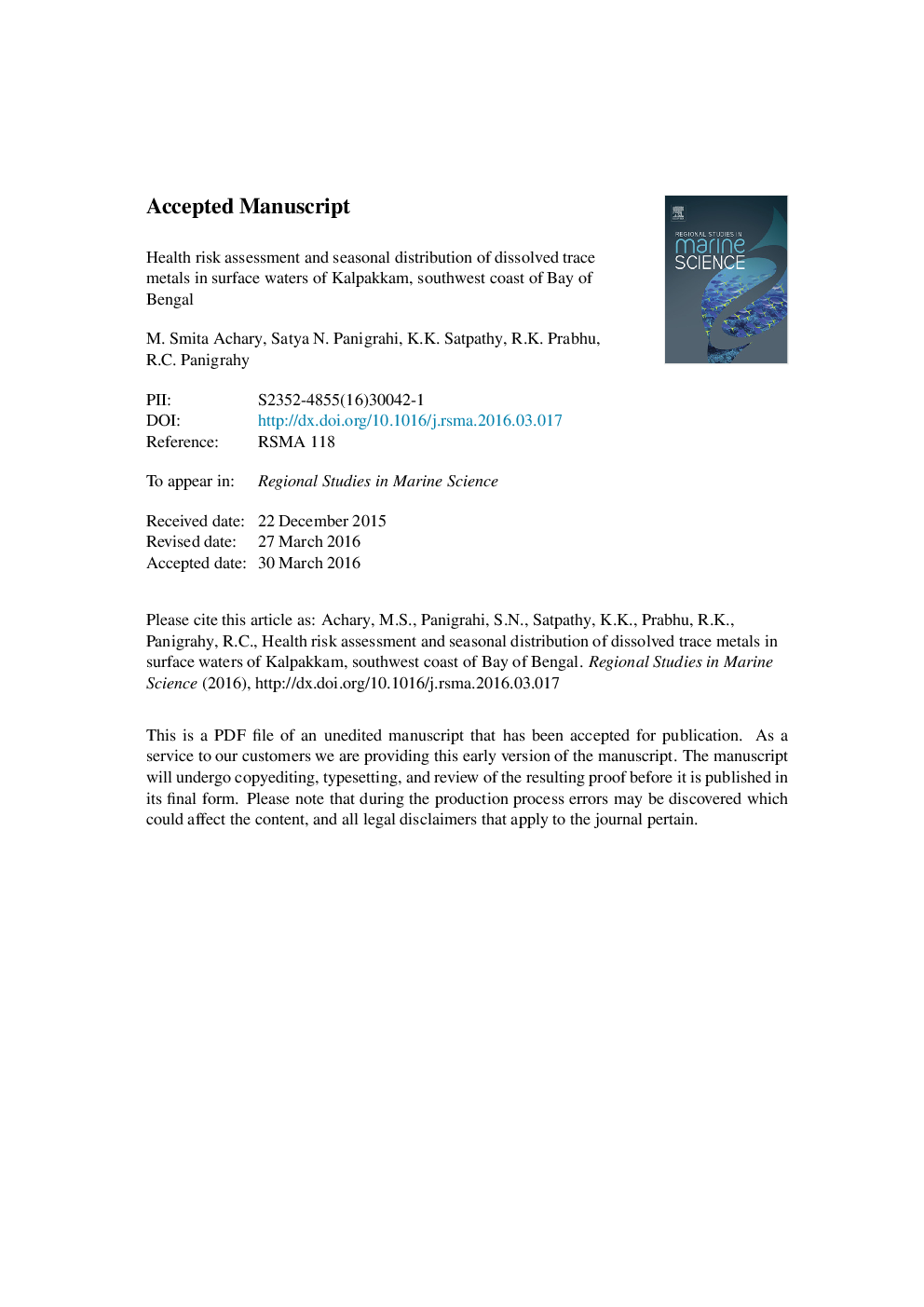| Article ID | Journal | Published Year | Pages | File Type |
|---|---|---|---|---|
| 6363294 | Regional Studies in Marine Science | 2016 | 47 Pages |
Abstract
Dissolved trace metal (Cd, Ce, Co, Cr, Cu, Fe, La, Mn, Ni, Pb, U and Zn) concentration in the surface water of Kalpakkam coast was investigated for two consecutive years (2012-14) to understand their seasonal fluctuations, source apportionment and risk assessments. Concentration of metal was determined using Inductively Coupled Plasma-Mass Spectrometry (ICP-MS). Significant seasonal distribution in metal concentrations was noticed and most metals showed relatively high concentrations during summer season. During the study period metals follow the concentration levels Fe>Zn>Cu>Pb>U>Cr>Mn>Ni>La>Cd>Ce>Co. Principal Component Analysis (PCA) explained 70.12% of the total variance by the first three factors indicating the role of internal and anthropogenic activities in the metal contents in the coastal waters of Kalpakkam. The bioavailability of the metals in dissolved form suggested that the non-cancer and cancer risks posed by them are minimal. The overall hazard index (HQdermal) and cancer risk levels were within the safe limits recommended by WHO. However, the carcinogenic risks of the metals revealed that dermal absorption (CDIdermal) of Fe might be a matter of concern. Summer season has higher Metal Pollution Index (MPI) values, than the remaining period. Metal pollution indices indicated that southwest monsoon (SWM) and northeast monsoon (NEM) periods were less contaminated (MPI: 1.0-2.0; Class-III) as compared to the summer season (MPI: 2.0-4.0; Class-IV).
Keywords
Related Topics
Physical Sciences and Engineering
Earth and Planetary Sciences
Oceanography
Authors
M. Smita Achary, S. Panigrahi, K.K. Satpathy, R.K. Prabhu, R.C. Panigrahy,
